On Land, On Sea, and In the Air, Allied Forces Attack
Operation Husky: The Sicily Landings 9 - 10 July 1943: The invasion
fleet at sea, viewed from the bridge of one of the ships. IWM NA 4027
Troops wade ashore from landing ships, 10 July 1943. IWM NA 4275
The Imperial War Museum (IWM) is a much better source to turn to for fine-quality photos of action in Sicily than The (Montreal) Gazette, but I cannot always find exact duplicates - as I did for the first Gazette offering below. With over 11,000,000 fine-quality photographs to examine and choose from, the IWM sometimes requires a lengthy visit before the one you're looking for can be found. So, I count myself lucky for one excellent find.
Help Wanted. If readers can find a clean duplicate for the above photo,
please let me know. Editor can be reached at gordh7700@gmail.com
The War News Digest below, besides proving an update re Sicily, also lets us know how 'the Russian bear' is doing:
"Compared with the losses in last August's Dieppe operation...":
About "the grim tally of Axis losses". (Why "and AIR" is not mentioned in the headline, making it a true 'combined operation', is not known!):
Neighbours are "buckled down to the tough and sweaty job ahead":
Ross Munro, well-known Canadian war correspondent, strikes again:
ROSS MUNRO'S account continues:
And, Ross Munro strikes again!
"Pretty 'heady days' lay ahead for Canadian forces? I would say so. Canadians were a part of the largest armada of all time up to that date in history; they were taking part in "the greatest combined operation ever attempted"; they were partnered with Montgomery's 8th and flanked by American forces as well. Even the several hundred members of RCNVR who had volunteered for Combined Operations back in late 1941, trained how to handle landing crafts in all conditions, likely felt they were contributing to one great enterprise during their 30 days (approx.) of service along the eastern shores. Detailed maps follow:
Four Canadian Flotillas of Landing Craft transported the "British Eighth Army"
to shore between Cape Passero and Syracuse. As found in Combined Operations
by Londoner Clayton Marks, RCNVR/Combined Operations
Canadian sailors in Combined Operations served at GEORGE, HOW
and JIG Beaches, Acid North (Centre), just south of Syracuse
(a Landing Ship, Tank) is about to disgorge tanks and other materials of war
(via a rhino bridge). A Landing Craft, Mechanised (LCM) , second left, was
a D-Day workhorse, the craft most familiar to my father at GEORGE Beach.
It is likely a few Canadian sailors are sprinkled among the group above.
ROSS MUNRO'S account concludes:
Allied troops appear to be moving quickly!
"U.S. landings in Sicily, 1943" as found at Getty images
Related to his first paragraph:
of Combined Operations No. 1 Training camp
As sent me by the son of Peter A. Neuman, RCNVR/Comb. Ops
Please click here to read Memoirs "Peter Neuman - Boy Soldier"
"How could such a concentration of materiel and soldiers have been landed...?" By 100s and 100s of well-trained sailors and their wee landing crafts. "And don't call them barges" (so said the sailors):
Don't be puzzled. This is how it's done!
of Sicily on 10 July 1943. Wackett, Frederick (Sergeant).
Reverse side of above photo
Combined "German and Italian measures" were not enough:
Meanwhile, back in Canada...
A few more items follow from The (Montreal) Gazette, July 14, 1943 issue, and clippings from the July 15 issue will not be far behind:
A duplicate photo? Not even close!
A Sherman tank moving at speed near Catania, 4 August 1943.
More contributions by Canadians (I am researching a well-respected Canadian newspaper, after all):
Please click here to view Research: Three Months in the Mediterranean, 1943 (7)
Unattributed Photos GH



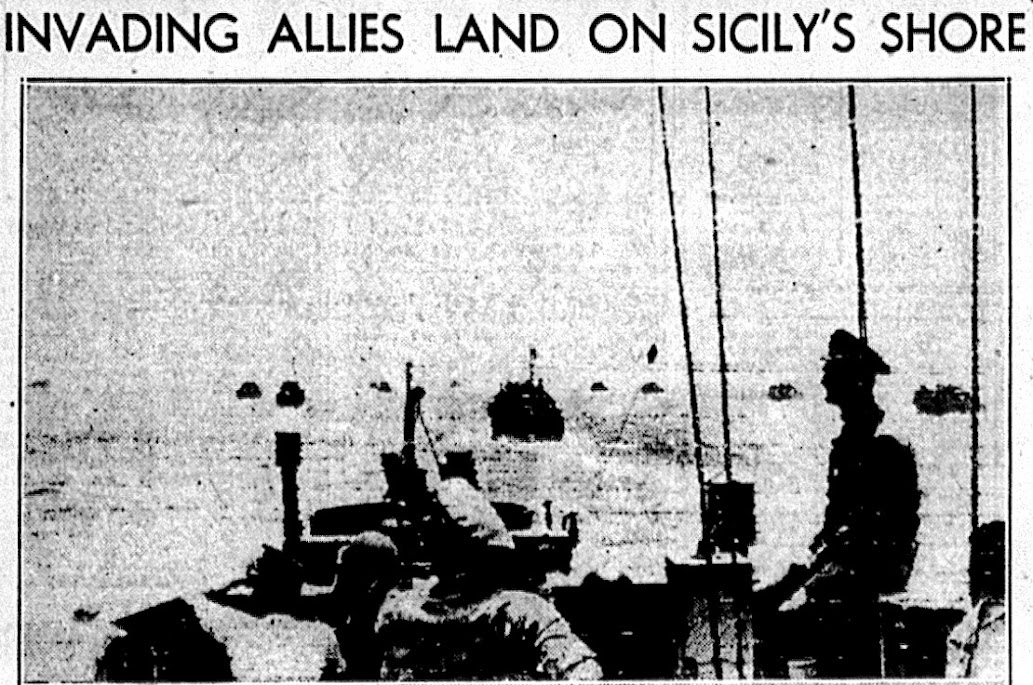










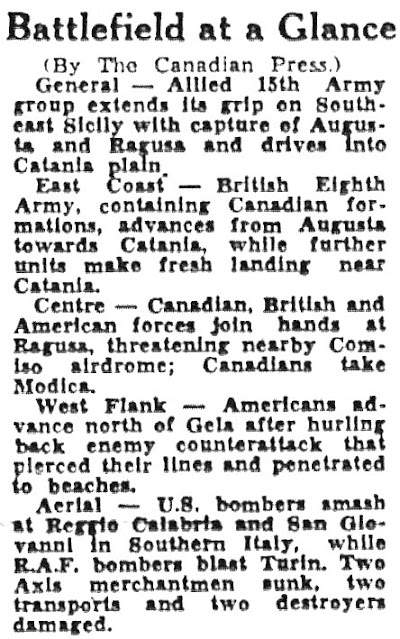











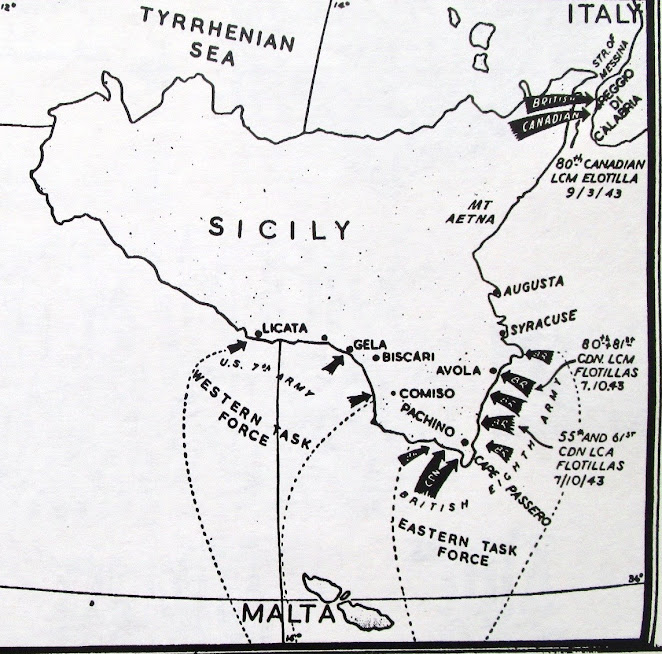











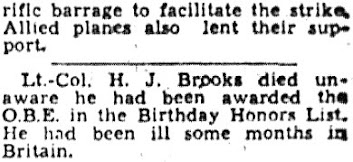
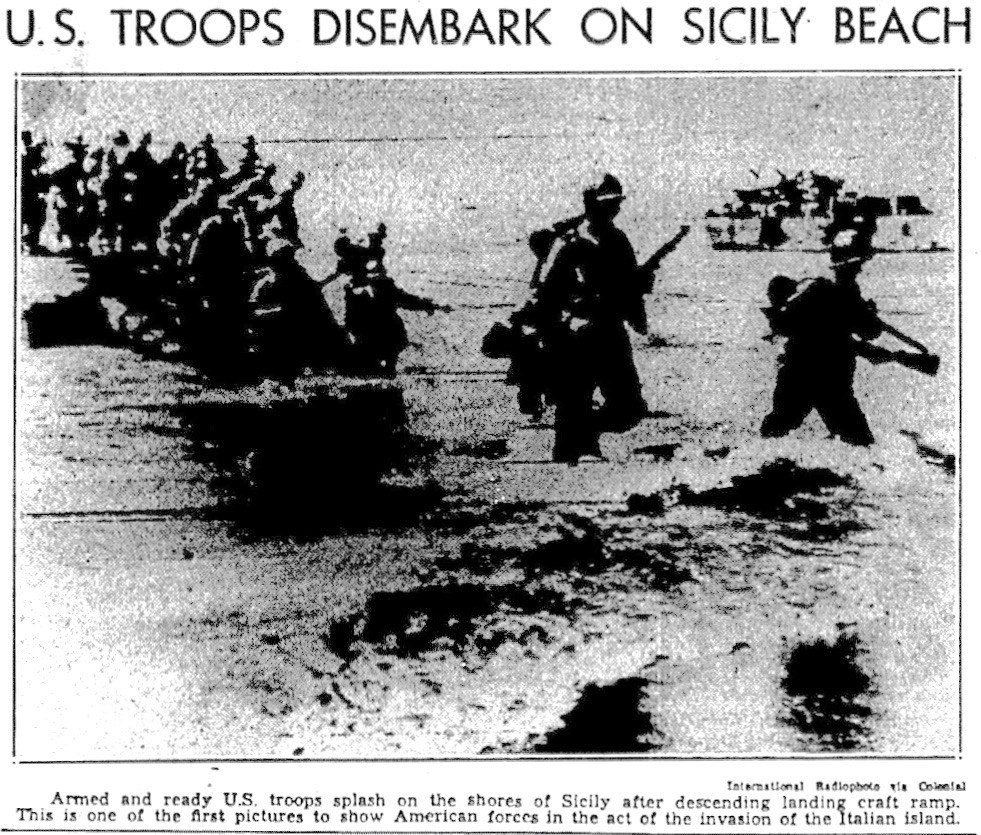
















No comments:
Post a Comment